5 Most Famous And Oldest Buddhist Temples You Must Visit Once In Your Lifetime
By: Kratika Maheshwari Mon, 18 Oct 2021 7:49:02
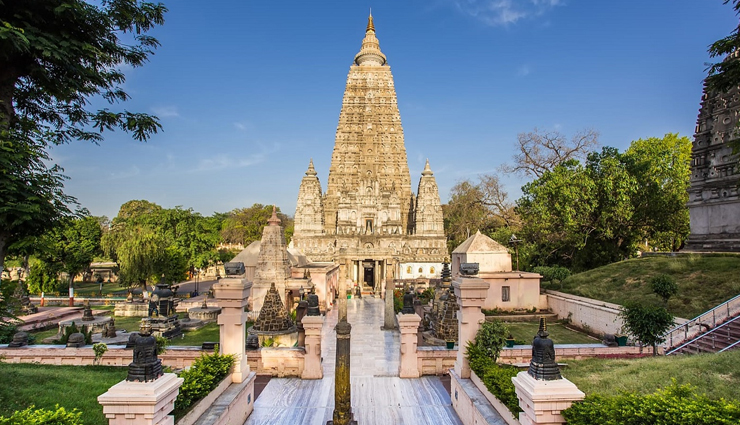
Founded in the mid-sixth and mid-fourth centuries BCE in India, Buddhism is one of the major and among the oldest religions in the world. It follows the teachings of Siddhartha Gautama, also known as the Buddha or Gautama Buddha, who was born in a region between India and Nepal and grew up in present-day Bihar and Uttar Pradesh. A non-theistic religion, Buddhism has spread throughout the Asian continent, and influences cultural and spiritual practices, art, and architecture.
One of the best examples of their architectural influence is seen in Buddhist temples. Buddhism is built upon the principles of Four Noble Truths that will ultimately assure liberation of the soul. Even the most traditional Buddhist temples often reflect the architectural styles of the region they are constructed in, and the temples are all designed to facilitate quiet reflection and meditation. We have compiled a list of the most beautiful Buddhist temples around the world, some perched precariously on cliffs, and some thousands of years old, all absolutely breathtaking!
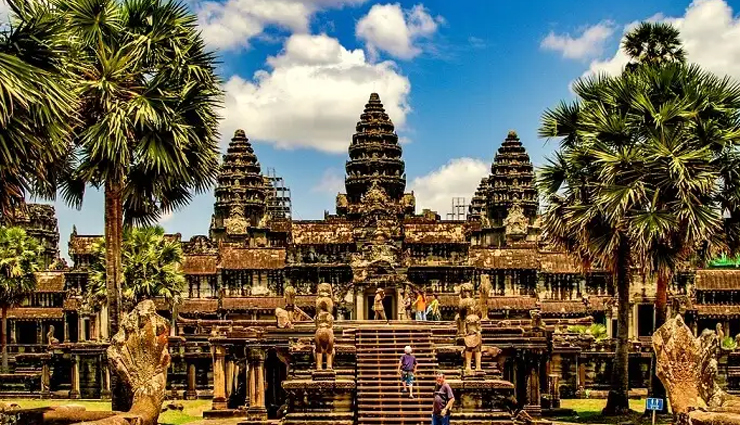
# Angkor Wat, Cambodia
This UNESCO-protected monumental complex in Cambodia is one of the most famous Buddhist temples in the world. Angkor Wat is one of the world’s oldest temples and is considered as the largest religious structure ever built. While the temple was originally dedicated to the Hindu god Vishnu, it became a centre for Theravada Buddhism near the end of the 12th century. The temple complex is a designated UNESCO World Heritage Site and is one of the most important places of pilgrimage in Southeast Asia.
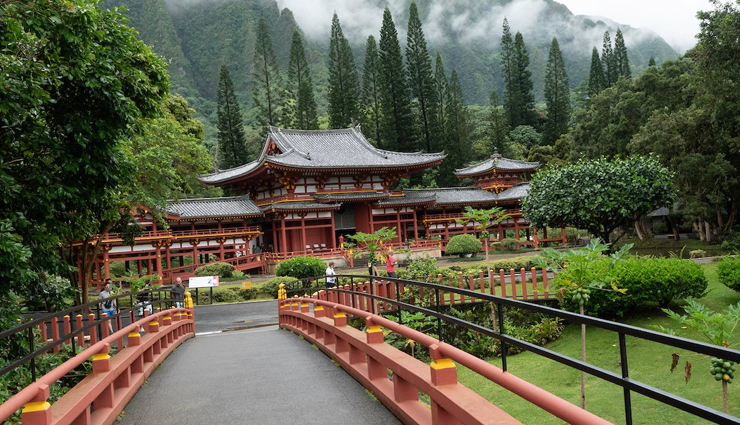
# Byodo-in Temple, Hawaii
The only American entry in this list is the Byodo-in temple in Hawaii, which is a replica of the 950-year-old Byodoin Temple of Uji in Kyoto prefecture of Japan. This temple is located at the foot of the Koʻolau Mountains in the Valley of Temples in Oʻahu’s Kaneohe Region. It’s also one of the newer temples on this list, built in 1968. Byodo-in, which translates to ‘Temple of Equality’ in Japanese was constructed entirely without nails, and was established to pay tribute to the Japanese immigrants to Hawaii on their centennial. This is a non-practising temple which welcomes people of all faiths to worship, meditate or simply appreciate its beauty. The serene temple grounds have peacocks, black swans, and turtles roaming around due to its lush landscape that contains garden ponds and waterfalls.
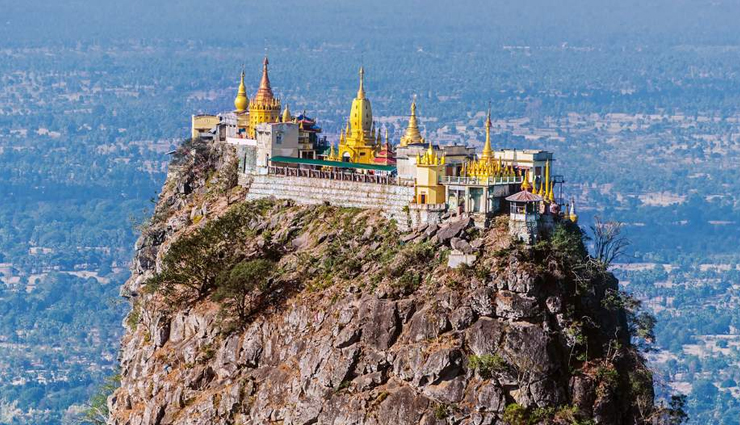
# Taung Kalat, Myanmar
This Buddhist monastery is located on top of Mount Popa, a volcanic plug (or neck) in Mandalay, and is one of the more popular pilgrimage destinations in Myanmar. It is one of several prominent nat (spirit) sites in the vicinity of nearby Mount Popa, and is therefore considered a source of nat spiritual energy. To reach Taung Kalat, you need to climb a 777-step hanging ladder that provides picturesque views of the city of Bagan from the 4,980-foot-high mountain. Pilgrims visit the site to visit the 37 nat statues, depicted in their human forms, and the numerous relics located there.
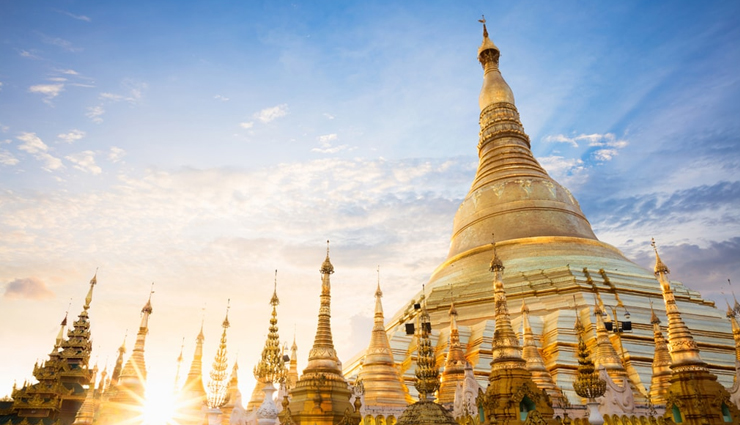
# Shwedagon Pagoda, Myanmar
Located in Yangon, Myanmar, the Shwedagon Pagoda (or Golden Pagoda) is the holiest Buddhist shrine in the country. It stands over 110 meters tall and was built somewhere between the 6th and the 10th century CE. While the temple complex is filled with glittering, colourful stupas, the centre of attention is taken by the main stupa which is 99 meters tall and is completely covered in gold. The spires of the main stupa are encrusted with 5,448 diamonds and 2,317 rubies while the tip of this imposing structure holds a 76-carat diamond. The temple even houses alleged strands of the Buddha’s hair and relics of four previous Buddhas.
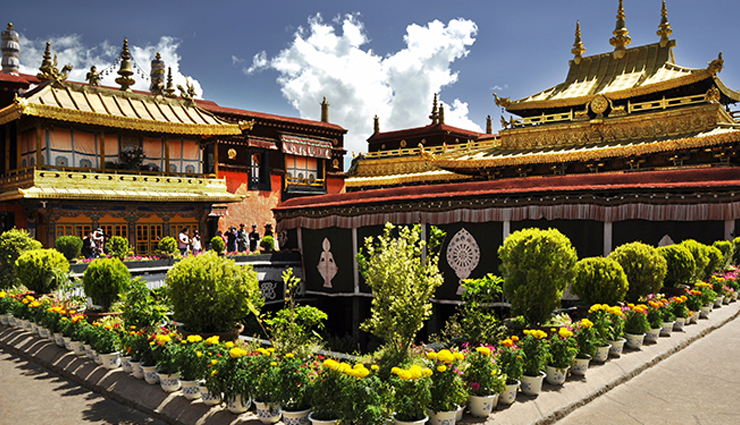
# Jokhang, Tibet
Located in Barkhor Square in Lhasa, the capital city of Tibet, Jokhang temple is considered the most sacred place in Tibetan Buddhism. It was built during the seventh century by King Songtsan Gampo to house important Buddhist statues brought from China and Nepal.
The oldest parts of this temple date back to 652 CE. The temple was ransacked many times by invading Mongols but the structure survived. Today a popular Tibetan pilgrim destination, Jokhang temple’s (also known as Qoikang Monastery, Jokhang Monastery and Zuglagkang) architecture showcases the style of Han, Tibet, India and Nepal.





